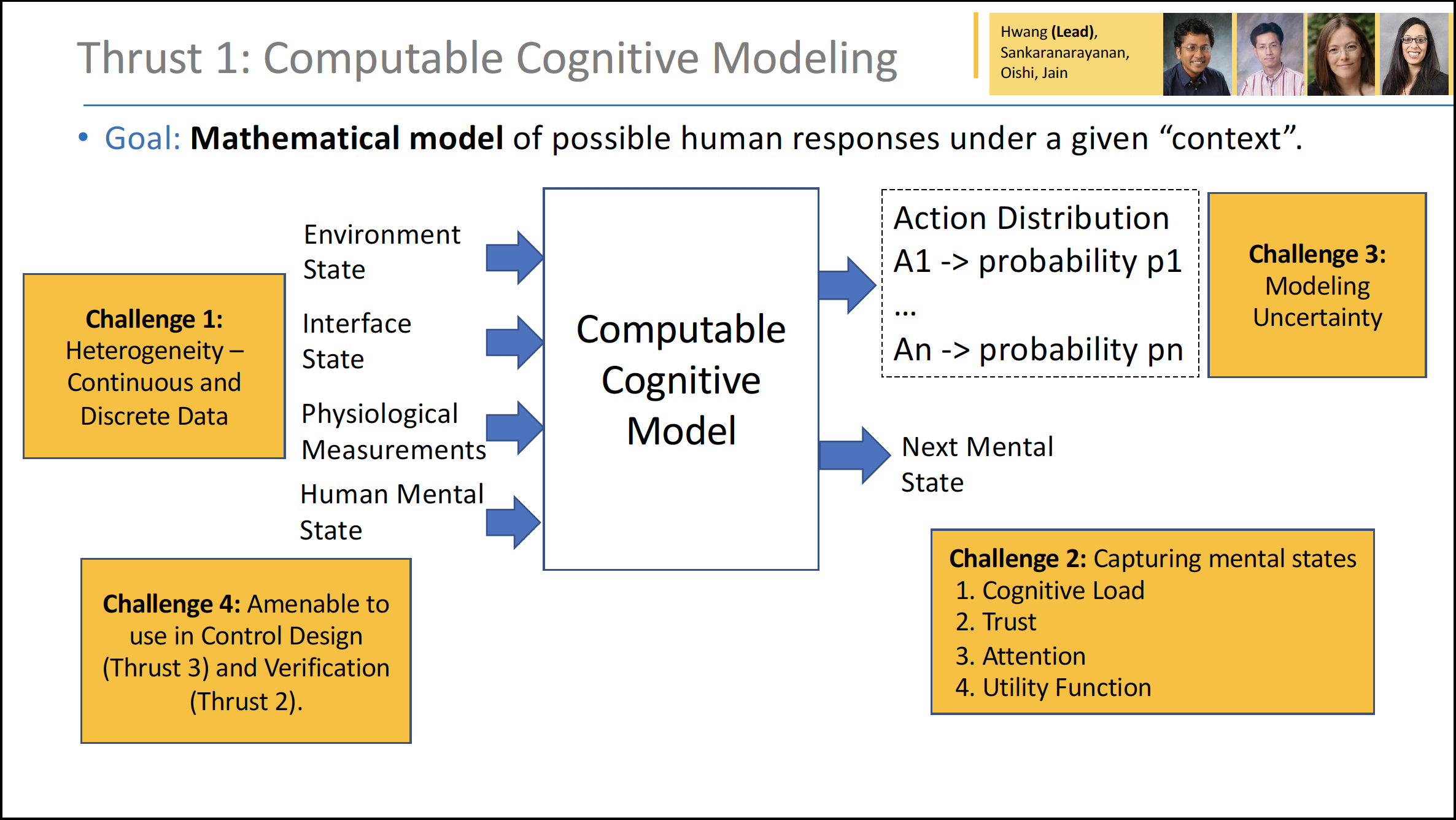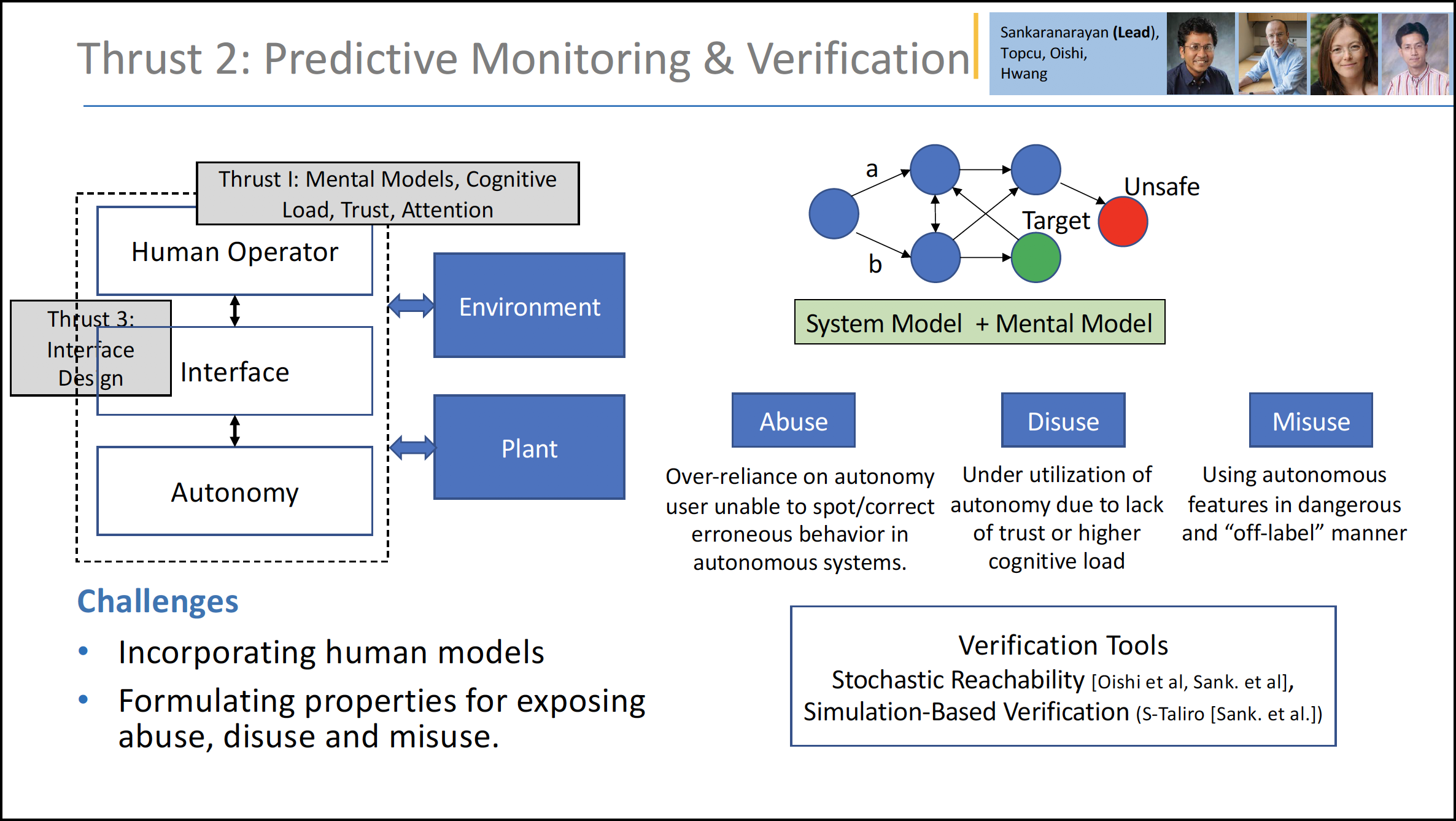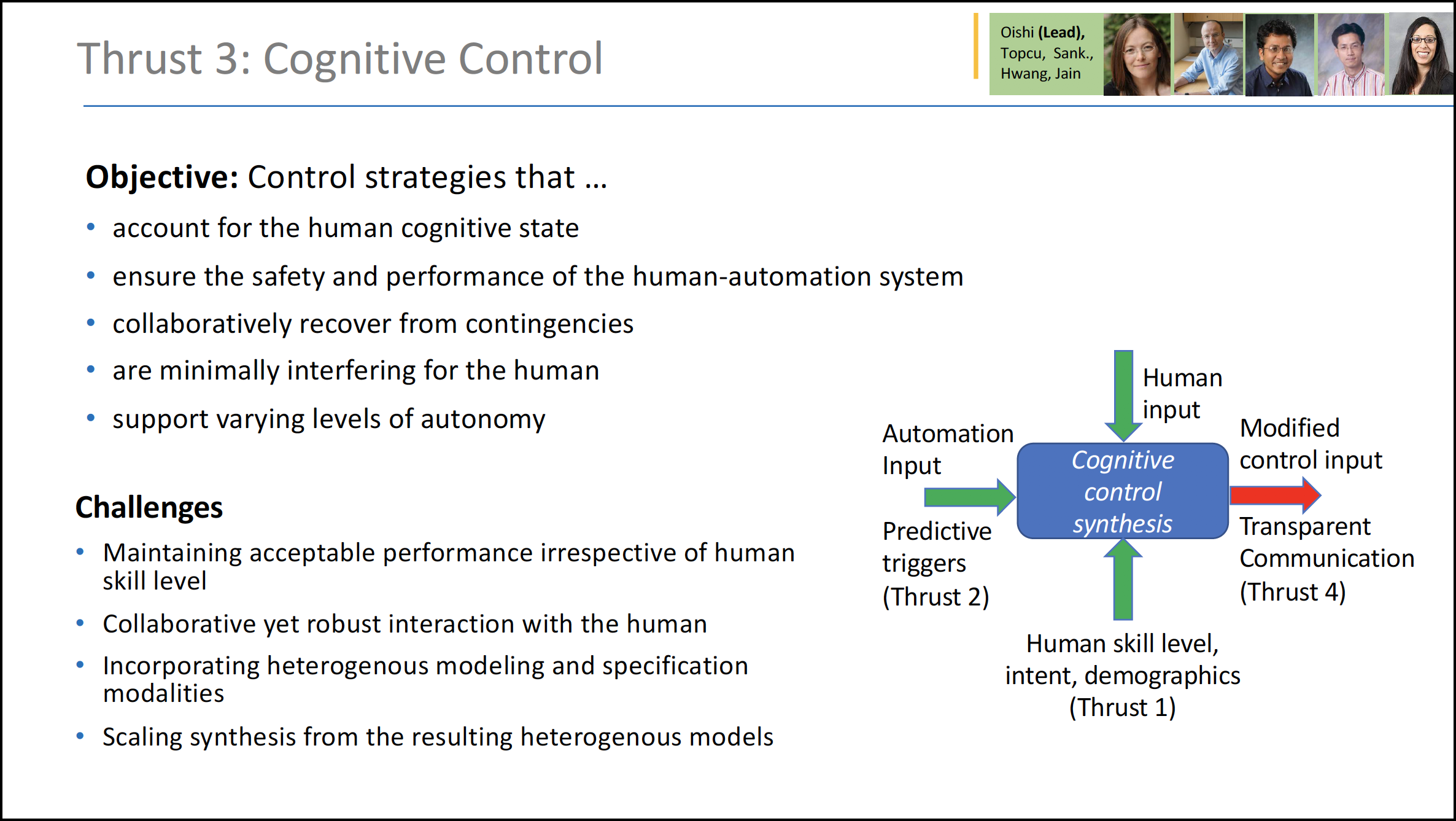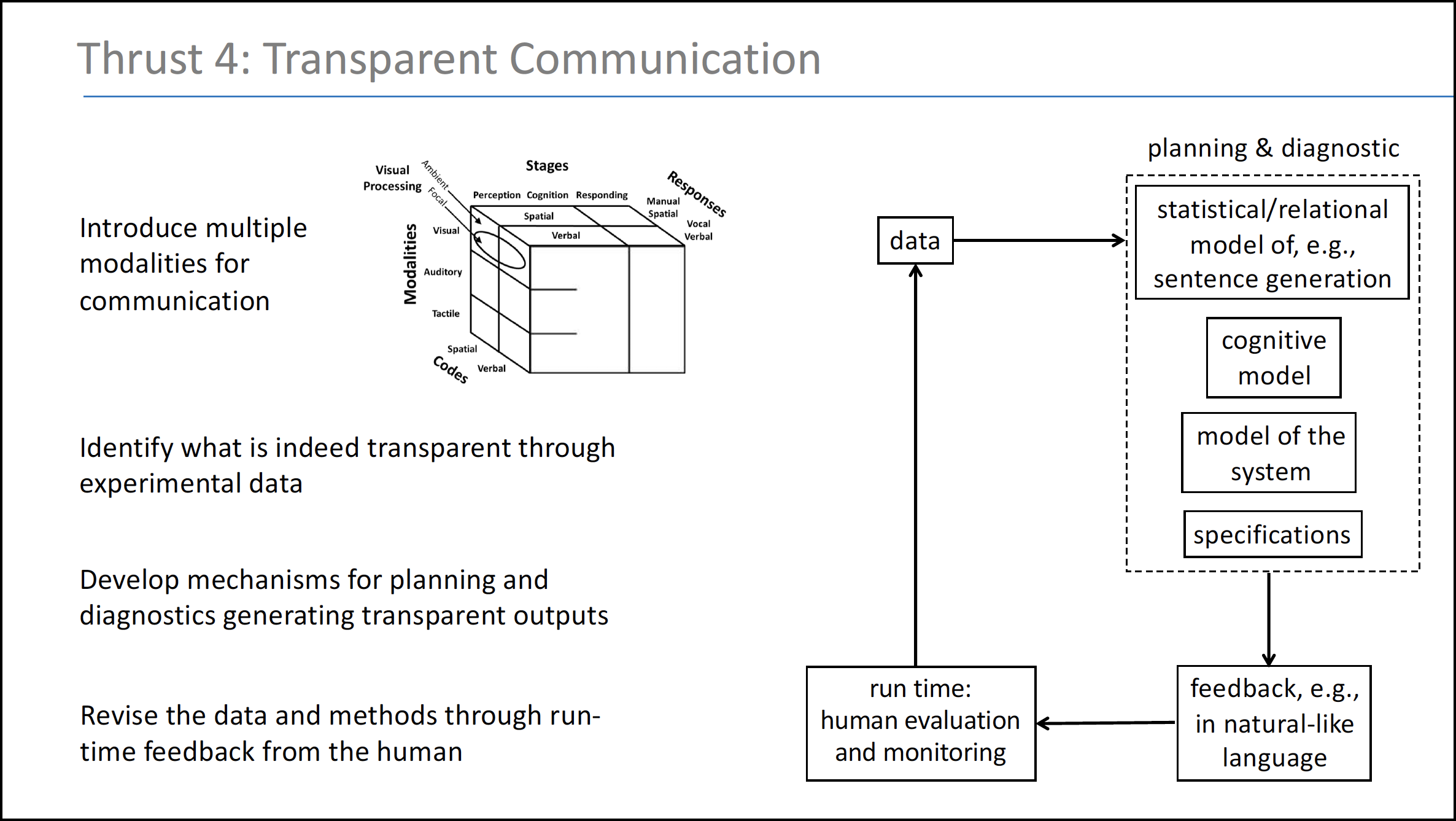Research
Research Thrusts
Thrust 1: Cognitive Models
Create cognitive models that are personalizable and computable that take into account a human’s intent, skill level, trust level, attention and other factors. Existing approaches typically either provide excessive detail, for example, describing low-level neurological phenomena that make models so large they confound computation, or are so simplistic that they are not useful in practice.

Thrust 2: Predictive Monitoring
Create algorithms for predictive modeling and verification that can anticipate potential problems and work to mitigate such problems in run-time. While historically, verification techniques provide mathematically elegant solutions, they require pre-specifying errors ahead of time, which is practically impossible when highly unpredictable humans are involved. The team proposes a combination of off-line probabilistic verification with on-line predictive monitoring and shielding.

Thrust 3: Cognitive Control
Create cognitive control that responds to both the human cognitive state and the physical state of the system so that the system can adjust to objective system performance, as well as to human attention, workload, and trust, in a dynamic fashion.

Thrust 4: Transparent Communication
Develop algorithms for transparent communication so that the intent of the autonomous system is clearly conveyed to the human in a manner compatible with the task and circumstance. Oishi said this will involve integration of principles from human factors and from formal methods to provide dynamics-driven insights in a concise yet intuitive manner.

